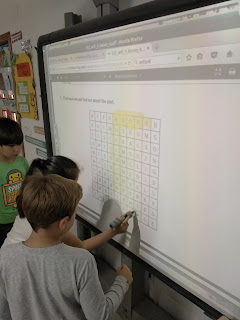They have represented oxygen, carbon and hydrogen atoms.
Afterwards, and once we have explained and understood how the atoms come together, we have built molecules of water, carbon dioxide and ozone using plasticine and toothpicks.
Para comprender qué es un átomo y una molécula. Los alumnos de cuarto curso han construido diferentes átomos utilizando la tabla periódica para saber cuántas partículas necesitan en cada uno de los elementos químicos representados .
Después,y una vez que hemos explicado y comprendido como se unen los átomos hemos construido moléculas de agua, de dióxido de carbono y de ozono utilizando plastilina y palillos.

















































